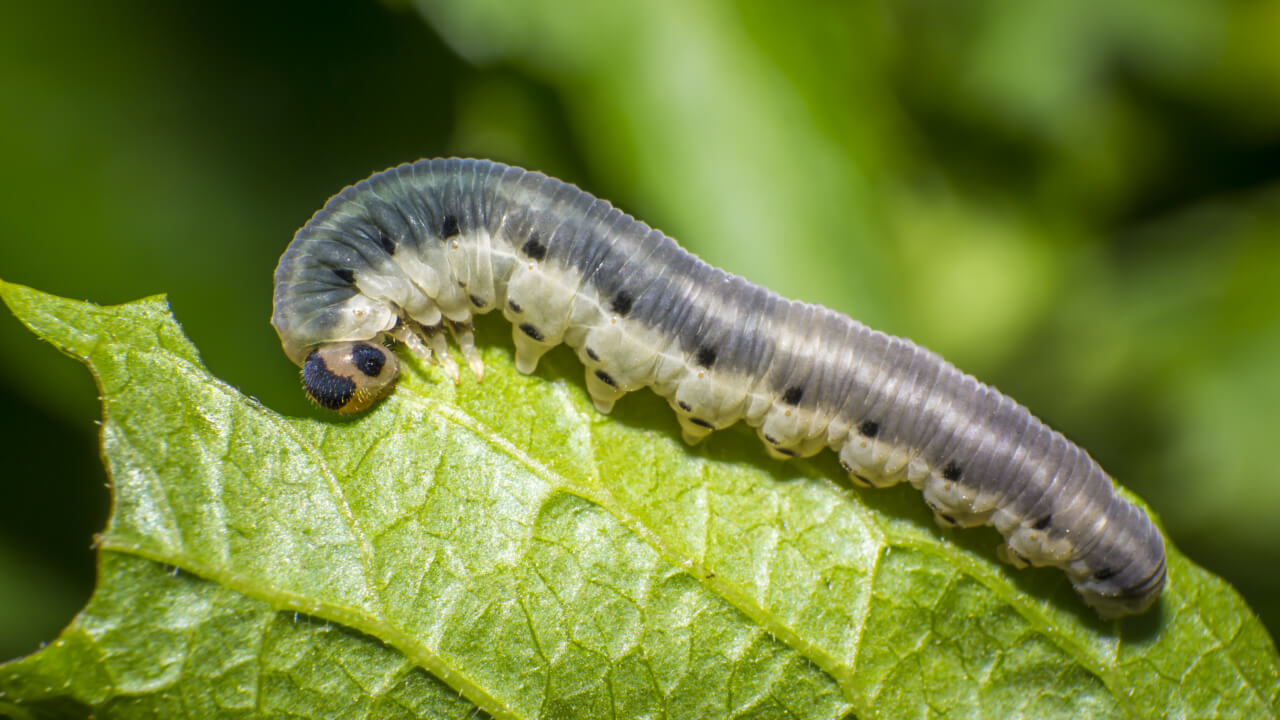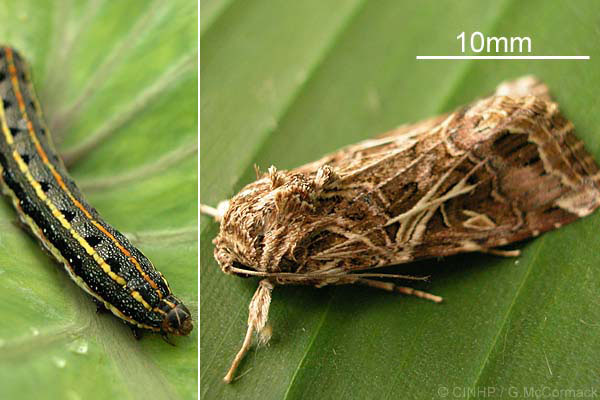
The mature larvae are up to 46 mm long, smooth and ranges from purplish to brown in colour.Larvae emerge from the pupae in the spring and feed on new plants. Cutworms overwinter in the soil as pupae.each spring females lay eggs on weed and grass hosts in fields or margins. Cutworms are an early-season insect pest.Lentil crops can often recover from cutworm damage given favourable growing conditions but maturity may be delayed.The feeding behaviour will vary depending on species, but most feed at night.Foliar feeding cutworms (dingy and army cutworms) feed above-ground, consuming the plant foliage.Below-ground feeding cutworms (pale western and red-backed cutworms) cut plants off at or near the soil surface.Cutworms can cause damage to newly emerged lentil seedlings, and at times may require insecticide application.

One larva can kill many plants until it pupates in the soil. Most sever young plants from roots near the soil line as they feed at the base of the leaves others feed on the roots and underground stems of cut plants.




 0 kommentar(er)
0 kommentar(er)
